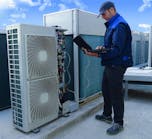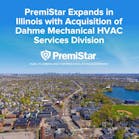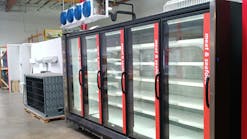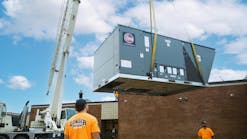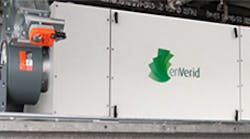BOSTON, May 9, 2017 — Approaching heat and humidity of summer signals the time for commercial building contractors and managers to make preparations to beat the heat. And with that comes energy savings, with the right approach.
The 2012 U.S. Energy Information Administration Commercial Buildings Energy Consumption Survey (CBECS) revealed that heating, ventilating, and air conditioning (HVAC) costs account for 44 percent of energy consumption in all U.S. commercial buildings and 53 percent in U.S. office buildings.
Traditionally, indoor air in commercial buildings is replaced with outside air every one to two hours to prevent high concentrations of indoor pollutants. While the process helps limit these pollutants, the high volume of outdoor air must be cooled to maintain comfortable temperatures and humidity inside the building during the summer months. At the same time, extra outside air flow to maintain air quality can result in some areas of the building getting too cold, sparking an increase in complaints from occupants. This problem is worsened in buildings with higher occupant densities than they were originally designed for — a common trend such as with open-plan office buildings.
One solution, from enVerid Systems, Inc., is called HVAC Load Reduction® (HLR®) technology, and "intelligent scrubber that removes carbon dioxide and other molecular contaminants from the air inside buildings, while greatly reducing the amount of outside air pumped into the building. Sources report it cleans and recycles the indoor air in compliance with ASHRAE Standard 62.1 IAQP. In doing so, HLR technology decreases the outside air intake required to ventilate a building by 60 to 80 percent. It also reduces peak HVAC capacity, resulting in 20 to 30 percent energy savings and up to 40 percent lower utility demand charges, particularly important during summer's peak demand days when electricity costs can skyrocket. Using less outside air extends the life of air filters, reduces water consumption, and will help postpone HVAC equipment replacement. Moreover, with HLR technology, buildings can invest in lower-capacity and less expensive HVAC systems, and benefit from decreased maintenance costs.
ArcBest, a multibillion-dollar logistics business, is one company that has seen a decrease in energy costs and increase in occupant satisfaction by installing these innovative technologies.
"I previously got calls from people that they were cold during the summer, which was a direct result of having to introduce so much chilled air into the building to meet the appropriate CO2 levels," said Richard Rieske, director of corporate facilities at ArcBest. "Likewise, they felt drafts during the winter due to all the outside air that was being used to ventilate the building. When enVerid's HLR modules are running, our people are more comfortable."
Solutions like the HLR system also enable increased visibility through Internet-of-Things (IoT) capabilities that provide 24/7 monitoring and management of a building's indoor air quality, temperature, and humidity. These real-time insights into air quality and comfort allow for more proactive management of buildings to help reduce energy costs and will keep occupants comfortable and happy all summer long.
